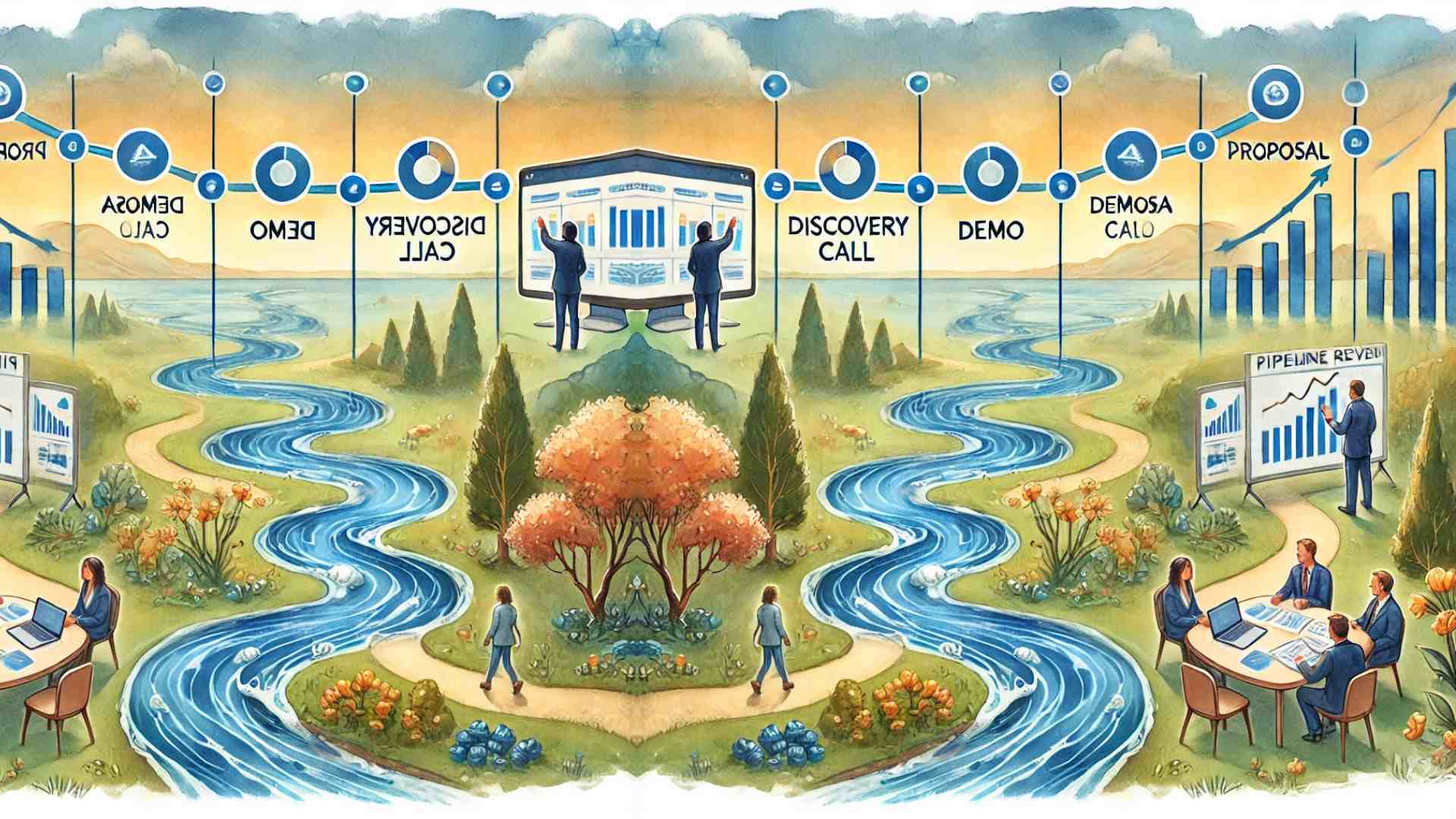
In SaaS sales, 80% of the effort happens behind the scenes. Discover the three principles to transform your pipeline management and close more deals effectively.
Power of Pipeline Management in SaaS
When it comes to SaaS sales, most people think the magic happens during customer interactions. However, 80% of the sales process actually takes place behind the scenes. This non-customer-facing work is crucial to closing deals and driving growth. Understanding what happens between customer meetings can make or break your SaaS business. This is where pipeline management comes into play.
In this post, we’ll dive into three principles that can transform your pipeline management and help you close more deals, increase your win rates, and accelerate your growth.
Principle #1 - Start with a CRM
The first principle is simple but powerful: have a CRM. You might think it's too early for your startup or that your team is too small to need one. But the sooner you start using a CRM, the better off you’ll be. Whether you’re a solo founder handling sales or leading a small team, a CRM keeps your sales pipeline organized and your deals tracked.
If you’re not ready for a full-blown CRM, start with something simple. Even a spreadsheet can work. The key is to have a single place where you document your deals.
Why Use a CRM:
- Centralized Data: All your sales data in one place.
- Pipeline Tracking: Easily see where each deal stands.
- Analytics: Gain insights into your win rates, average deal size, and more.
I recommend using HubSpot CRM. It’s free to get started and scales with your business.
Principle #2 - Define Clear Stages in Your Pipeline
Once you have a CRM, the next step is defining clear stages in your pipeline. These stages represent the journey a deal takes from initial contact to closing. For SaaS companies, a typical pipeline might look like this:
- Discovery Call: The initial conversation where you learn about the prospect’s needs.
- Demo: Showcasing your software’s value and how it solves the prospect’s problems.
- Proposal: Sending a tailored proposal based on the demo discussion.
- Closed-Won or Closed-Lost: The deal either closes successfully or is lost.
Each stage in your pipeline should be clearly defined, and every deal should be tracked as it moves through these stages.
Why Define Pipeline Stages:
- Predictability: Know what to expect at each stage.
- Improved Win Rates: Focus on improving the stages where deals often get stuck.
- Accurate Forecasting: Understand how likely it is for a deal to close.
For example, if your SaaS company typically closes 25% of discovery calls, you’ll need to start with four discovery calls to close one deal. Over time, as you track your deals in the CRM, you’ll better understand these conversion rates and can optimize your process.
Principle #3 - Conduct Regular Pipeline Reviews
The final principle is to regularly review your pipeline. This isn’t a one-time setup; it’s an ongoing process. If you’re the sole salesperson, set aside time in your calendar for these reviews. If you manage a team, schedule regular one-on-one and team reviews.
During these reviews, focus on three key questions:
- What’s my forecast? Based on the current pipeline, what’s my expected outcome?
- Is each deal in the right stage? Ensure that deals are accurately placed in the pipeline and nothing is overlooked.
- What’s the next step? Determine the action needed to move each deal to the next stage.
These reviews allow you to take a macro view of your sales pipeline and ensure that every deal is on track. By identifying bottlenecks, you can make adjustments and keep the pipeline flowing smoothly.
Putting It All Together
When you implement these three principles—using a CRM, defining clear pipeline stages, and conducting regular reviews—you create a strong foundation for your SaaS sales process. This isn’t just about closing more deals; it’s about building a scalable, repeatable system that drives long-term growth.
By understanding the levers and metrics in your sales process, you can make informed decisions, partner effectively with marketing, and create a revenue-generating machine.
Bullet Points Recap:
- Start with a CRM: Centralize your sales data and track your pipeline.
- Define Pipeline Stages: Create clear stages to predict and improve deal outcomes.
- Conduct Pipeline Reviews: Regularly assess and adjust your pipeline for optimal performance.
If you’re serious about growing your SaaS business, mastering pipeline management is a must. With these principles, you’re well on your way to creating a sales process that not only meets but exceeds your goals.
Startup Hub